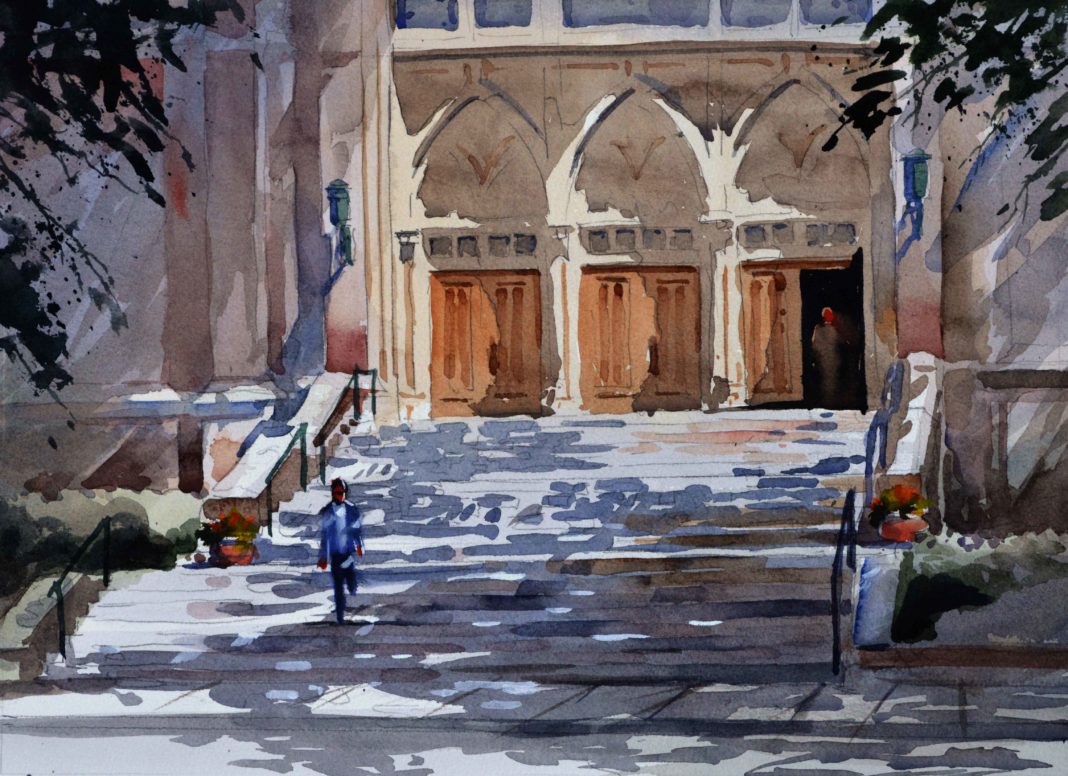Starting with a solid framework in pencil gives this Texas artist the freedom to face outdoor scenes more spontaneously in watercolor.
Watercolor: Letting Loose
BY STEFANIE LAUFERSWEILER
“Painting outdoors requires that you often work rapidly and simplify,” says Michael Holter. “It’s a natural training ground for working more loosely.”
Painting loosely happens best, however, with a little planning. “With watercolor, the initial drawing is critical, especially if the subject is a complicated one,” Holter says. “Then, when the brush hits the paper, I am able to express myself more loosely as the painting develops.”
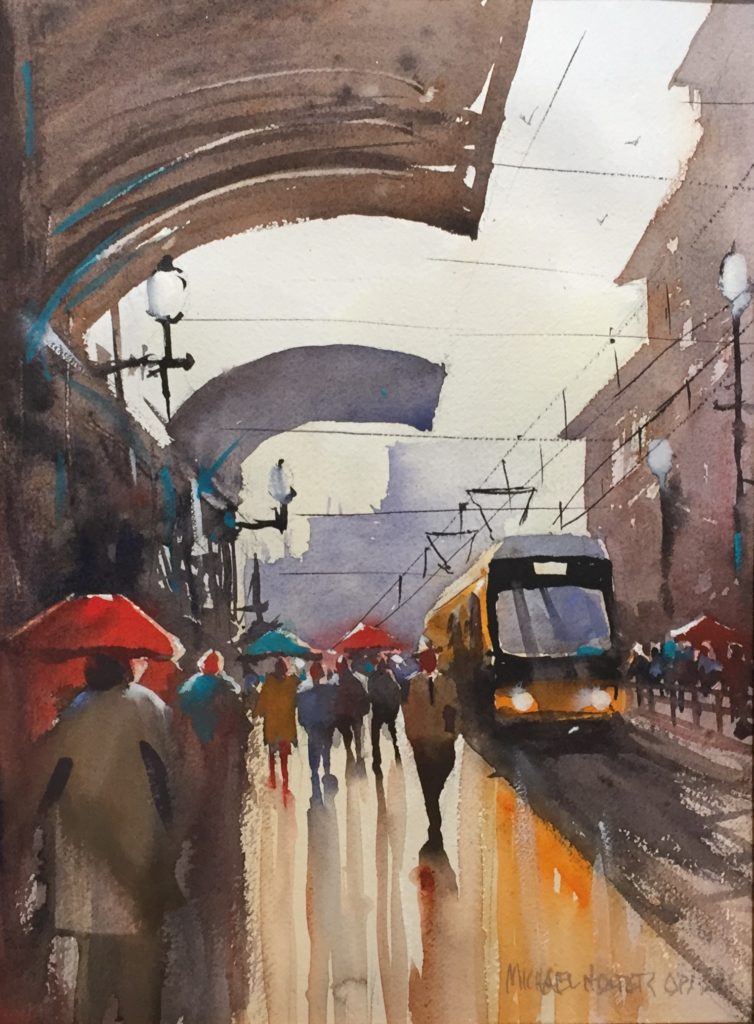
THE SUBTLETIES OF SNOW AND WATER
Many of Holter’s paintings reveal tranquil glimpses of the American landscape. Time spent living in North Dakota, Minnesota, Virginia, and currently Plano, Texas, has given him insight that translates directly to his artwork. “Up north, the seasonal changes are dramatic as compared with southern locations,” he says. “There, I learned a lot about capturing scenes with sketches and finishing in the studio.”
Painting snowy scenes in sunlight, in particular, taught him much about color and the subtleties of light and shadow. “It helped me understand the color of light and how it affects what is being illuminated,” Holter says. “It’s a good place to observe how the shadows pick up the color of the sky, or the color reflecting off a building nearby. The artist must be observant to see the color of the reflected light that bounces back into the shadow, many times warming the natural coolness.”
Water requires similar astute observation and some adjustment to simplify it for a painting. “There are so many ways that water reflects what is near it and also allows you to see through it,” he says. “You learn to paint what you see and not what you might think it looks like.”
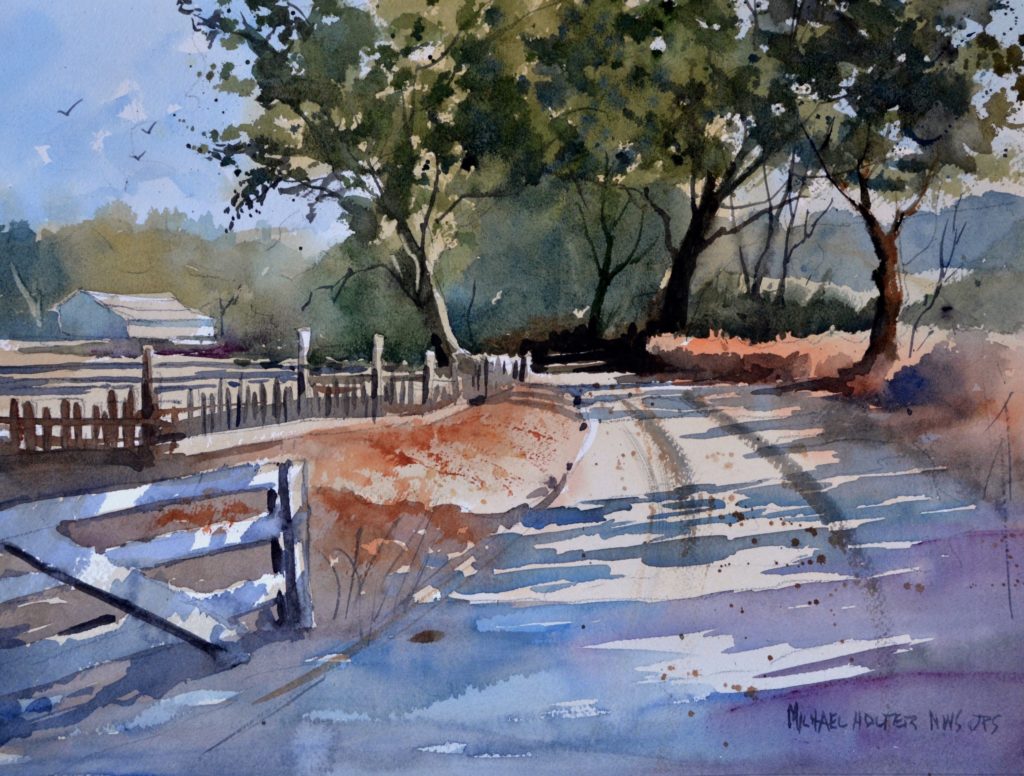
HINTING WITHOUT GIVING IT ALL AWAY
Holter has painted most of his life and earned degrees in art education and visual communication, which led to jobs in commercial and fine art, working as an art teacher, creative director, and gallery owner. Today, he paints full time and maintains a rigorous workshop schedule. Besides landscapes in watercolor and oil, figures in watercolor are another of his specialties.
Having once considered a career in architecture, Holter is also fascinated with manmade structures, a passion that is evident in his cityscape work. “Architectural elements — shadows on a fire escape or building facade, the way sunlight filters through a red awning or umbrella to cast warm hues on the surrounding area — have the kind of compositional strength that draws my attention,” he says.
Holter presents just enough structure to make his subject recognizable, while allowing room for his interpretation to evolve according to the viewer. “You have to let go of the need to paint every detail,” he says. “It’s not necessary to paint every brick on a wall, for example. Look for and paint shapes, starting with the largest. Learn to paint with large brushes and develop a watercolor shorthand to suggest rather than overstate. Let viewers fill in the areas you choose to leave to their imagination.”
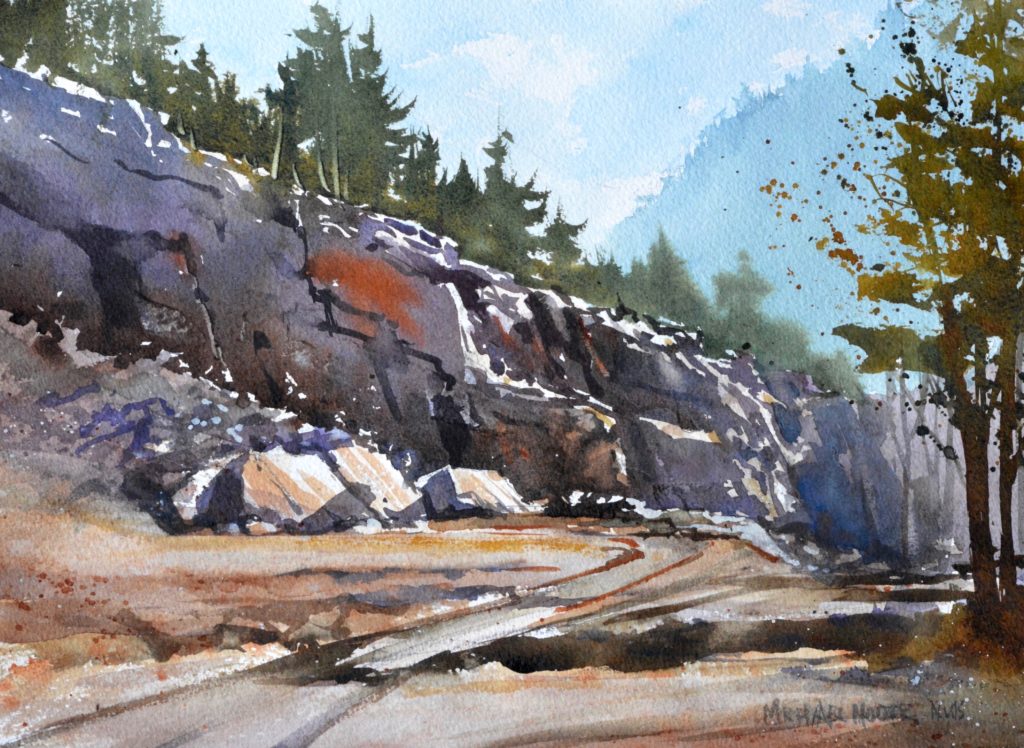
NOTES FROM THE FIELD
Most of Holter’s plein air work takes three to four hours to do. He takes photos in case he won’t be back to the scene, and tries to think ahead as he works. “I try to determine what will happen to the sunlight in the next few hours,” he says. “Sometimes I might anticipate where a particular shadow will fall, in order to get the most from the finished painting.”
Holter has made himself aware of how humidity, temperature, and wind affect his plein air process — and therefore the outcome. He uses a water-filled spray bottle to keep his watercolors fluid on the paper longer, and when he needs to dry his surface fast and fully between washes, he says, “Sometimes the best dryer is the heater in your car set to high.”
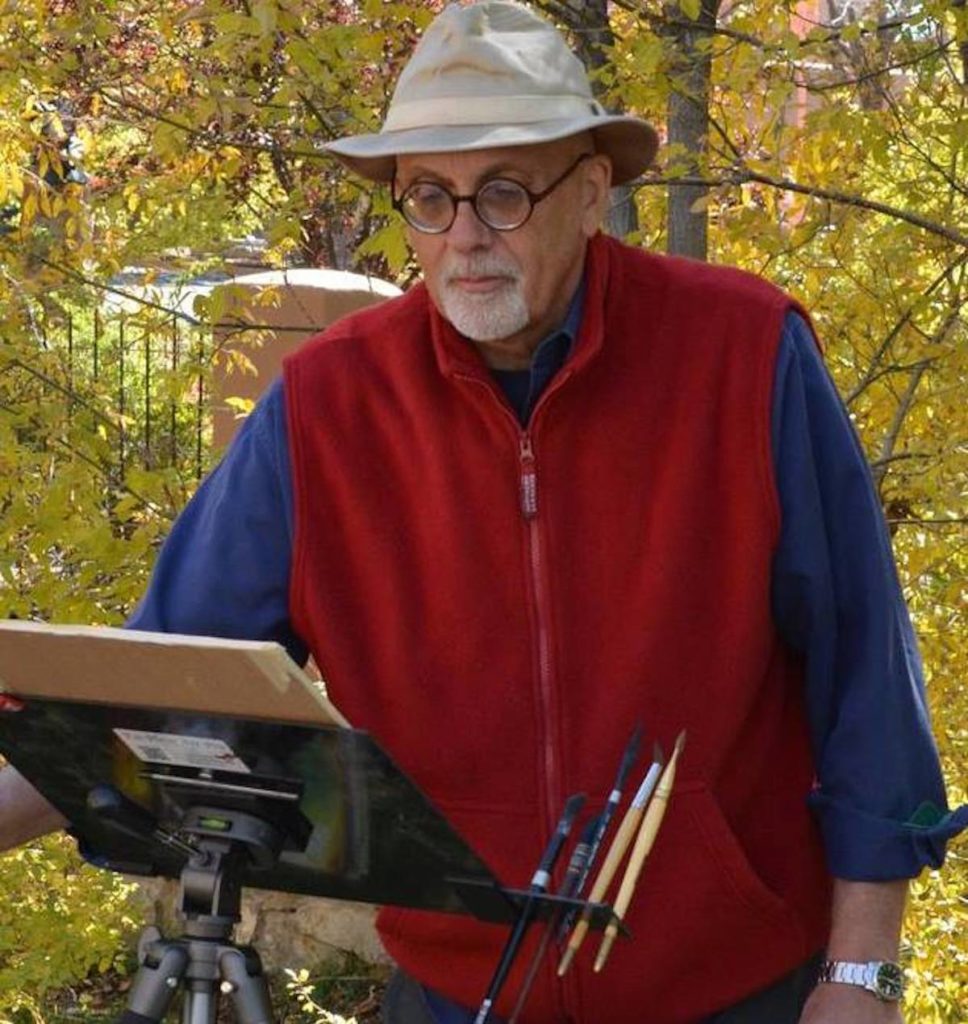
Visit EricRhoads.com to find out all the amazing opportunities for artists through Streamline Publishing, including:
– Online art conferences such as Plein Air Live
– New video workshops for artists
– Incredible art retreats
– Educational and fun art conventions, and much more.
> Subscribe to Plein Air Today, a free newsletter for artists
> Subscribe to PleinAir Magazine so you never miss an issue

